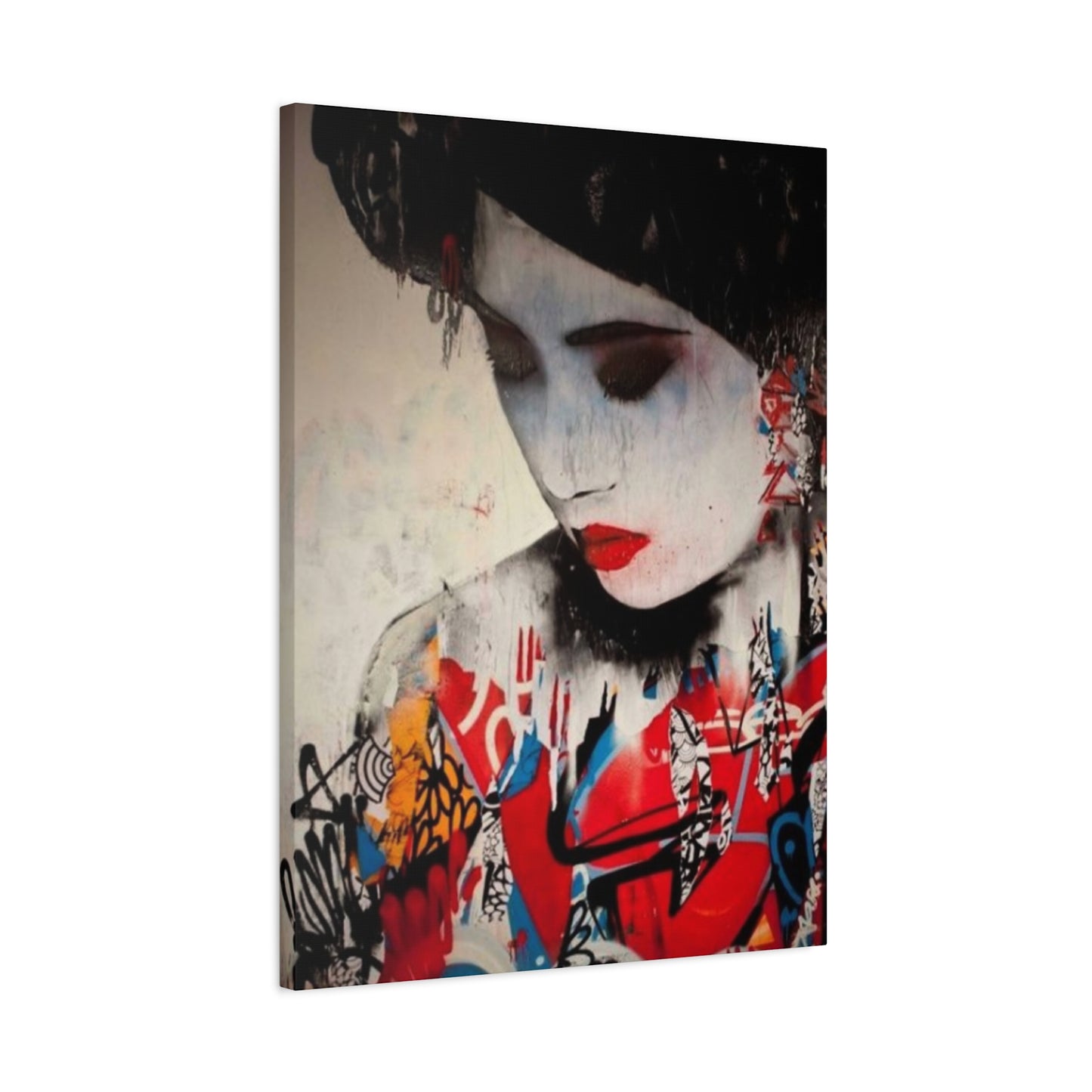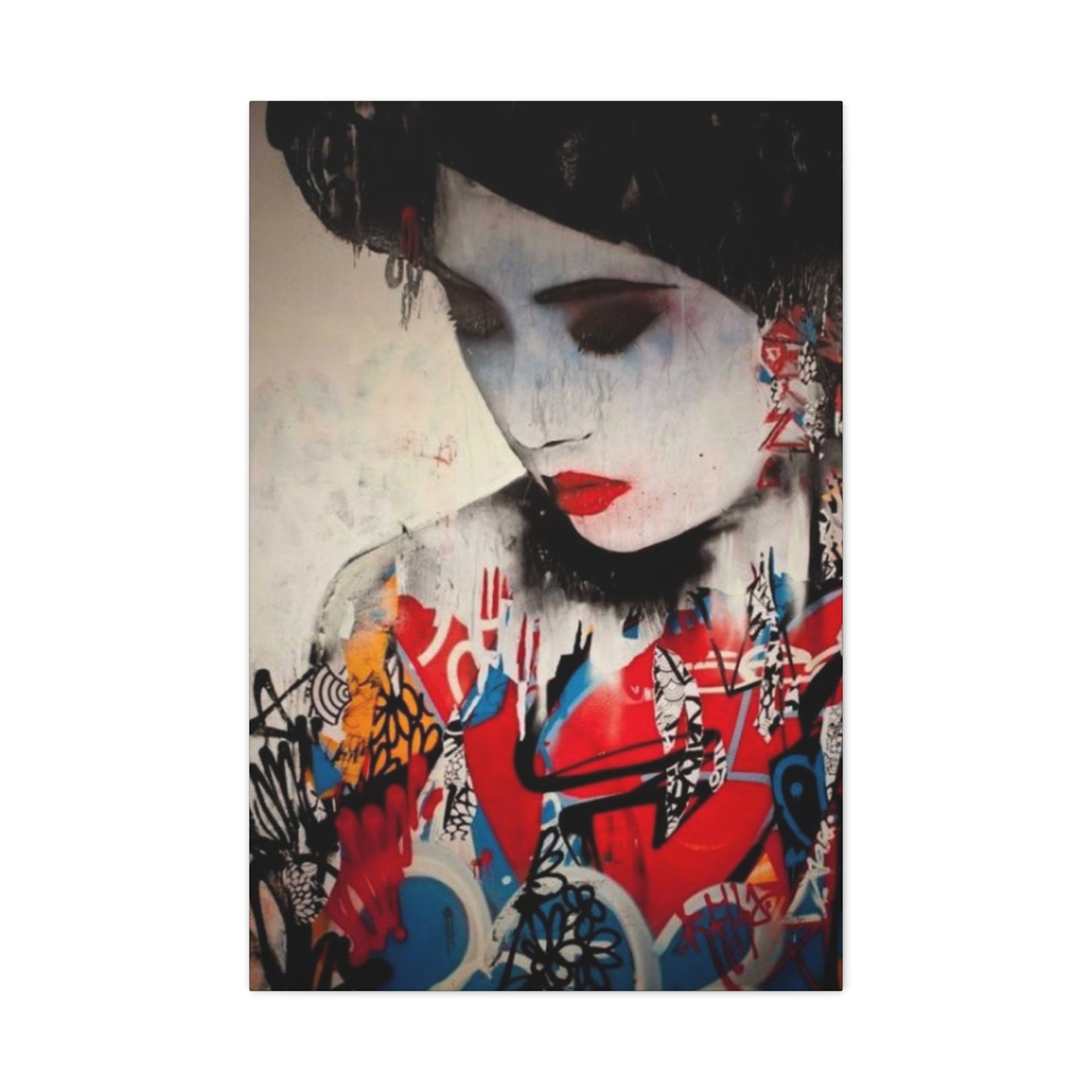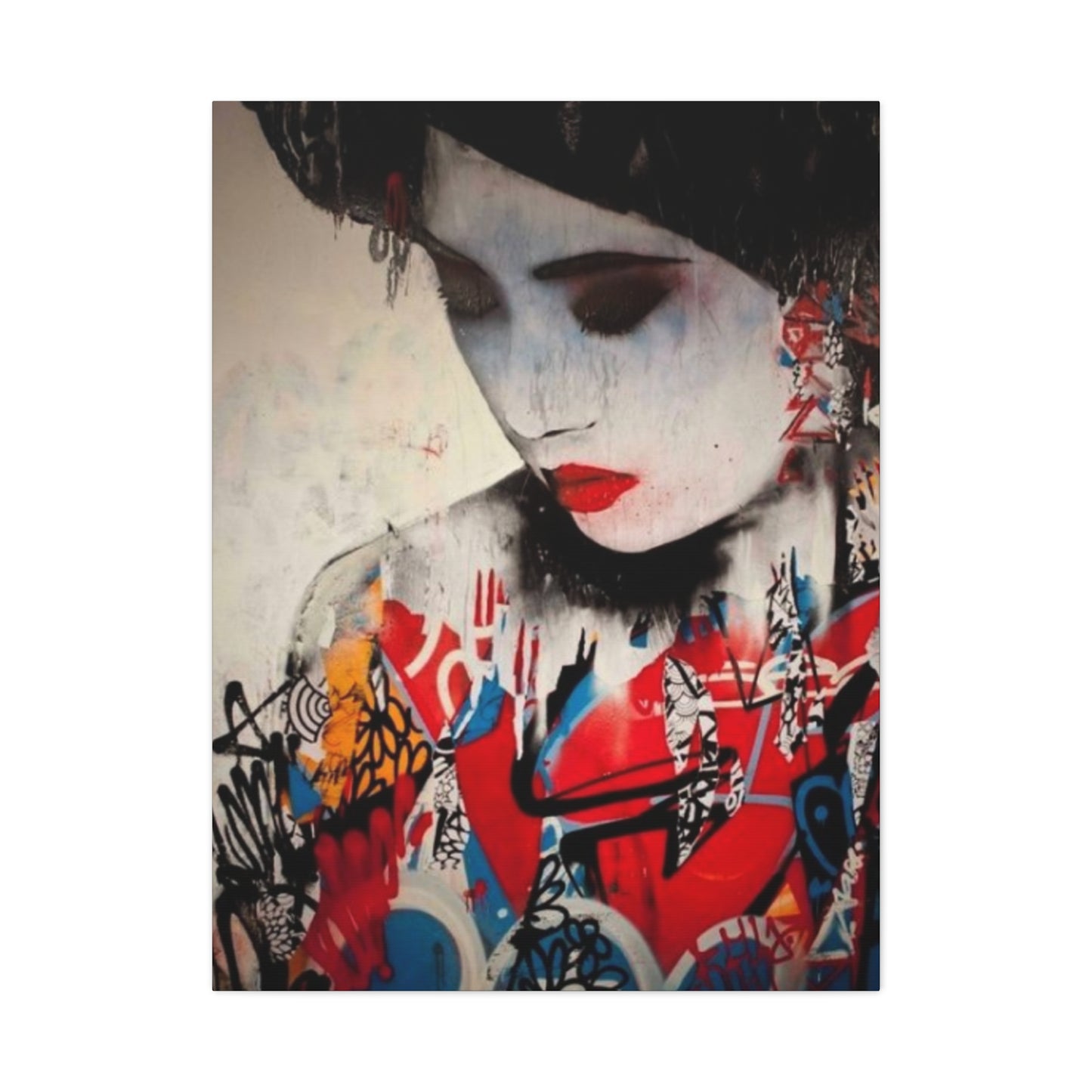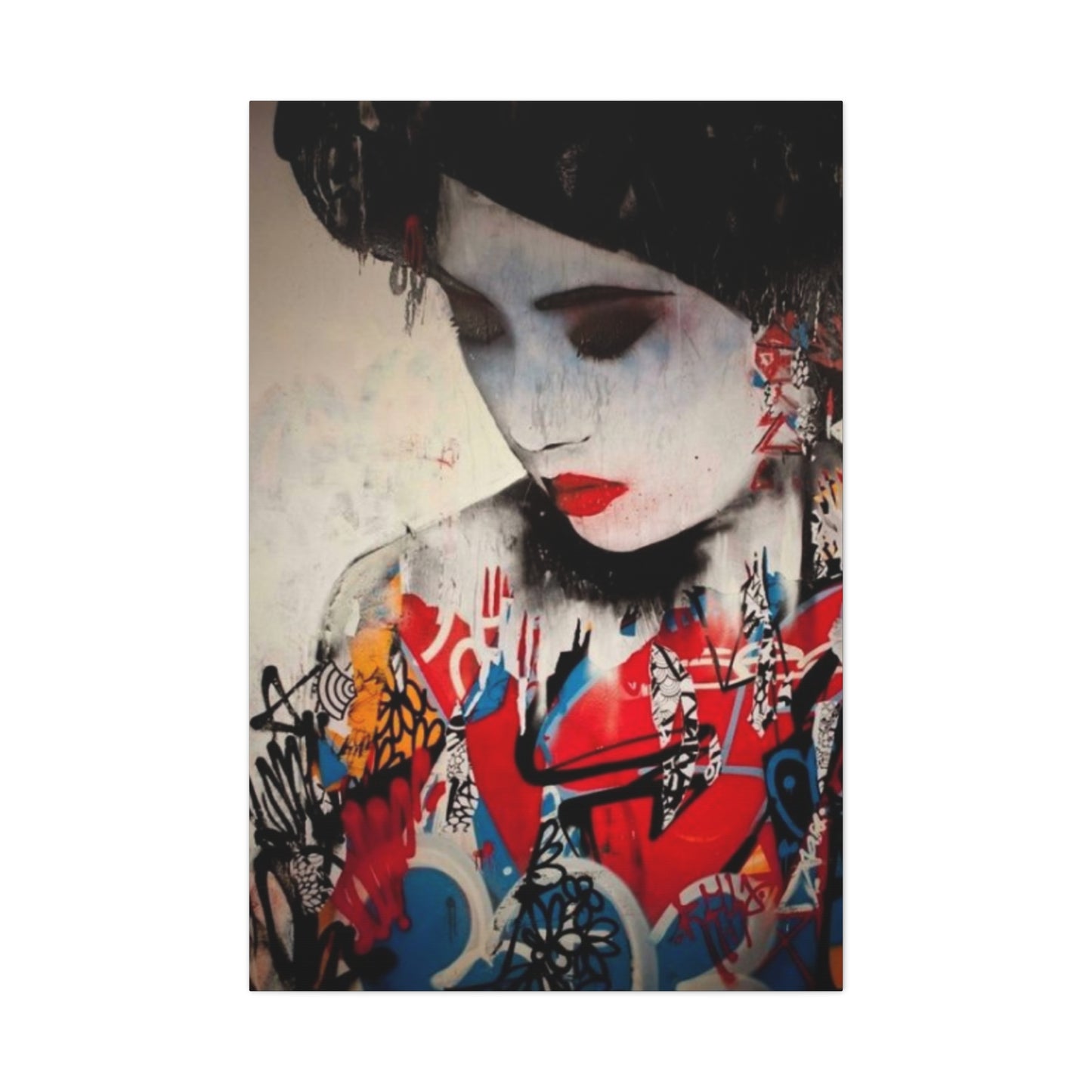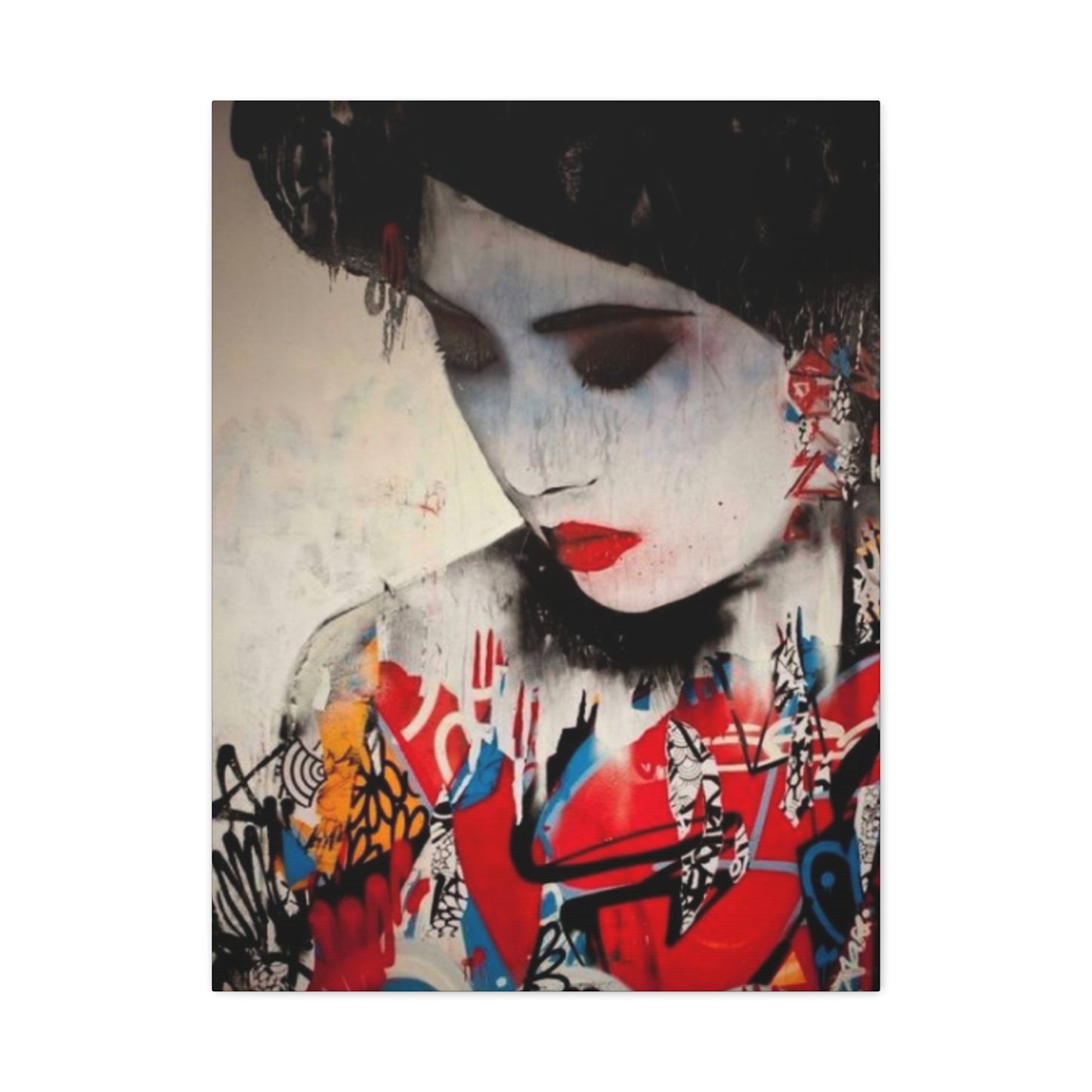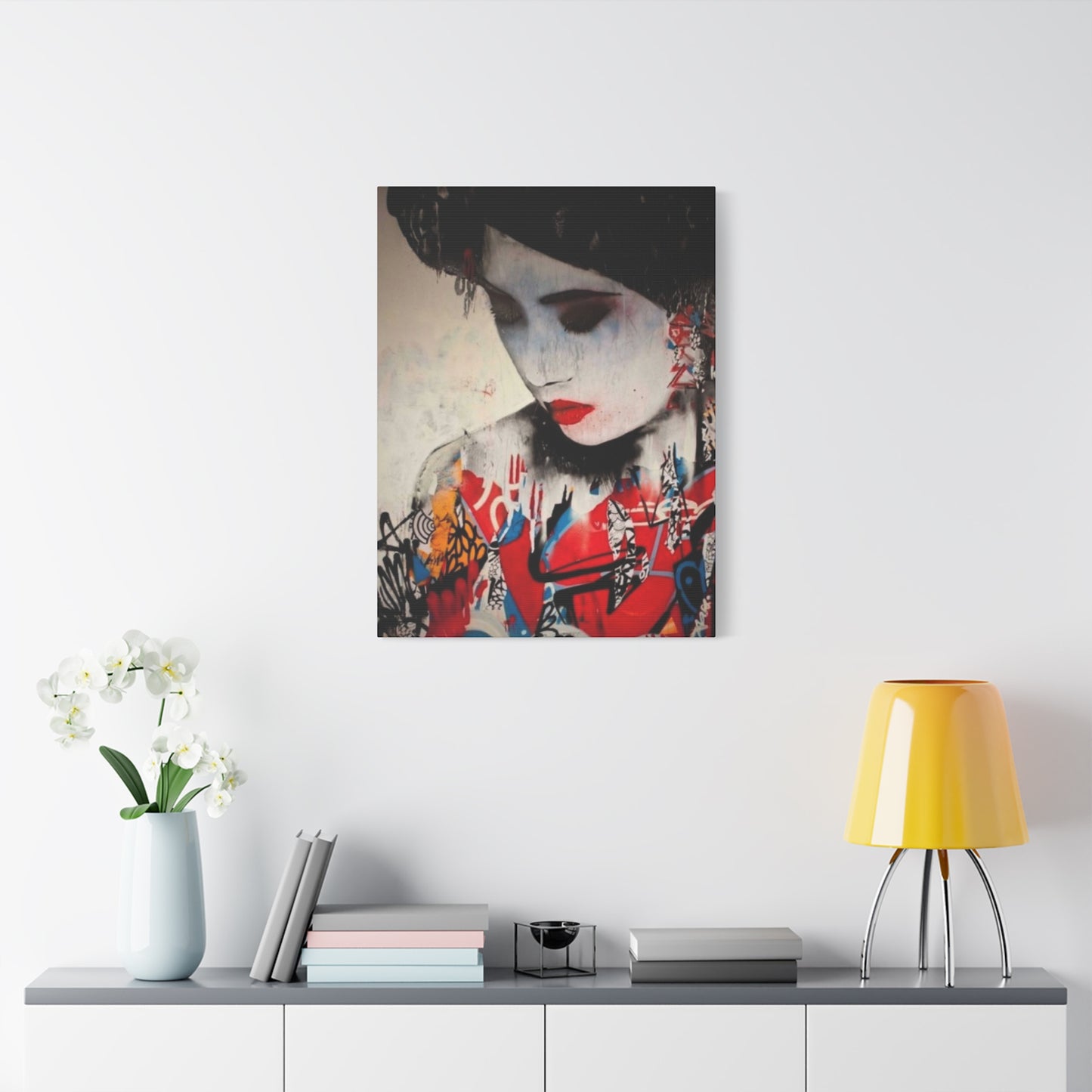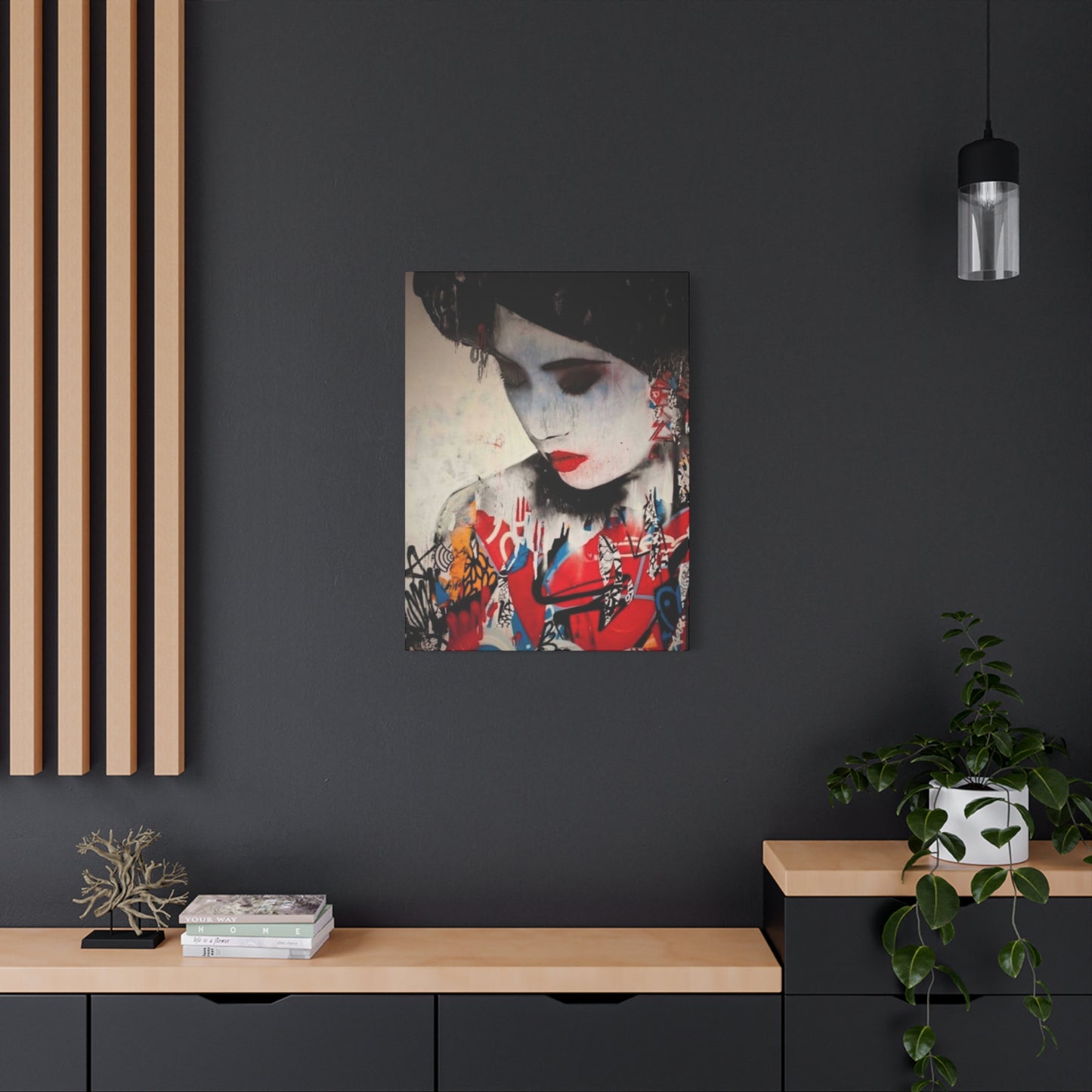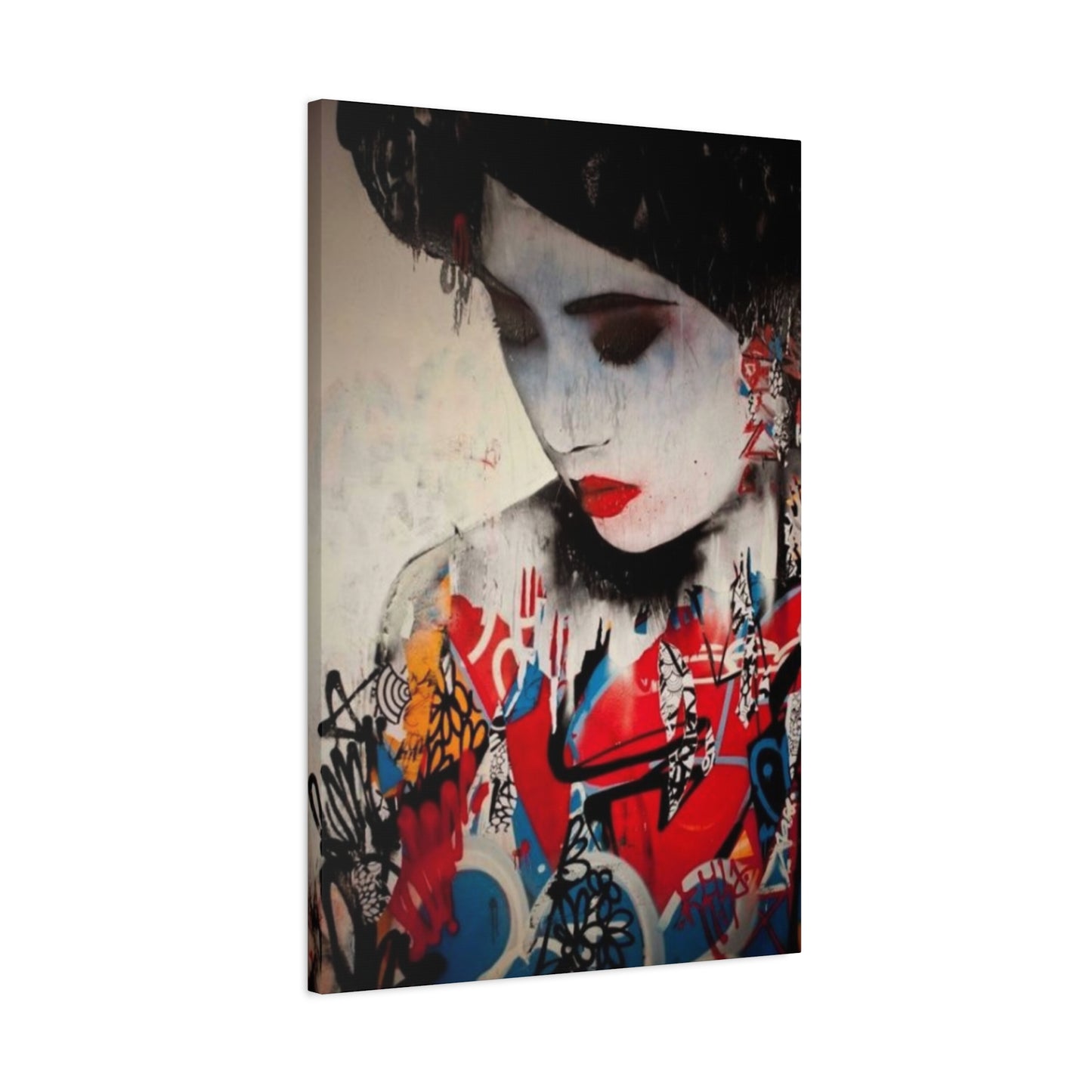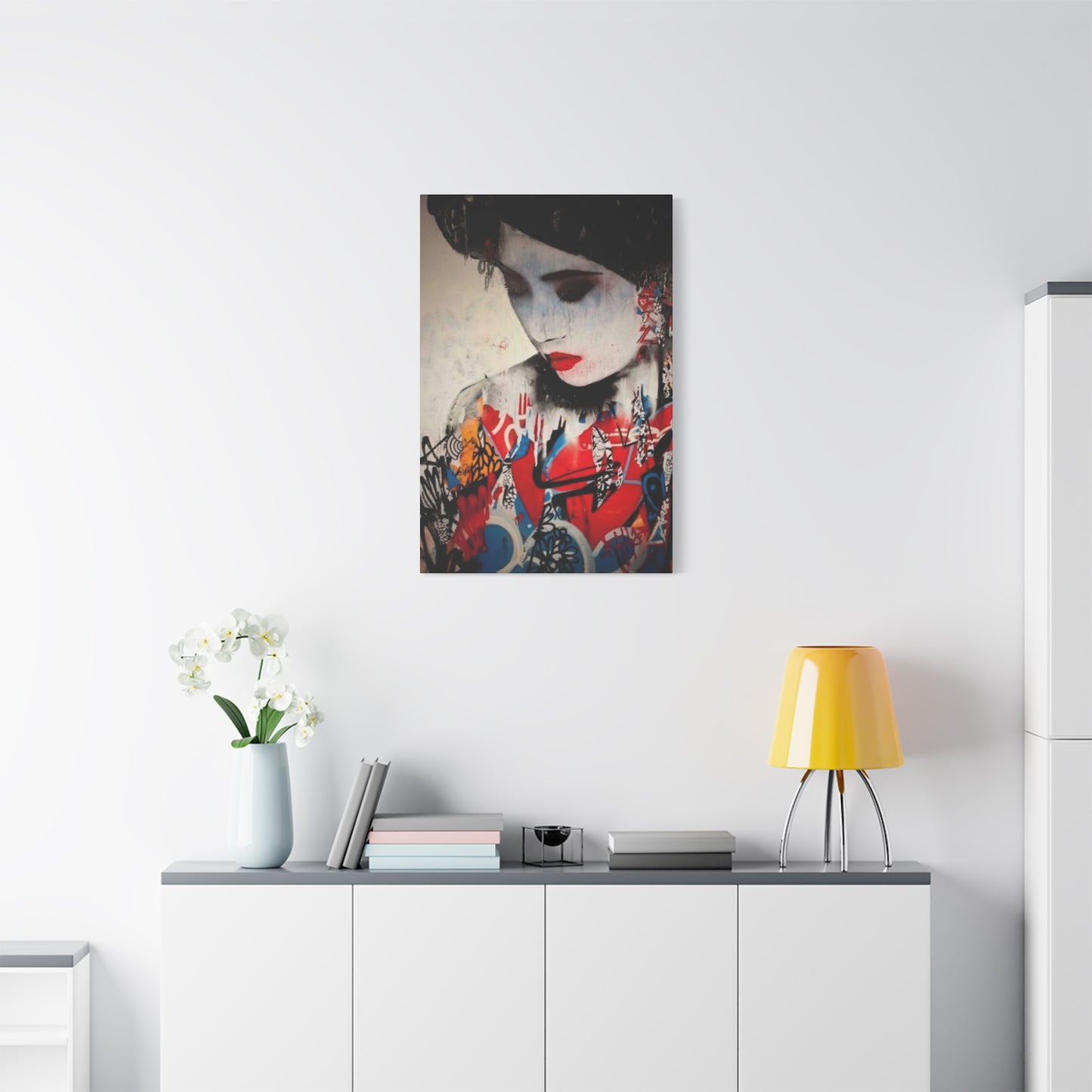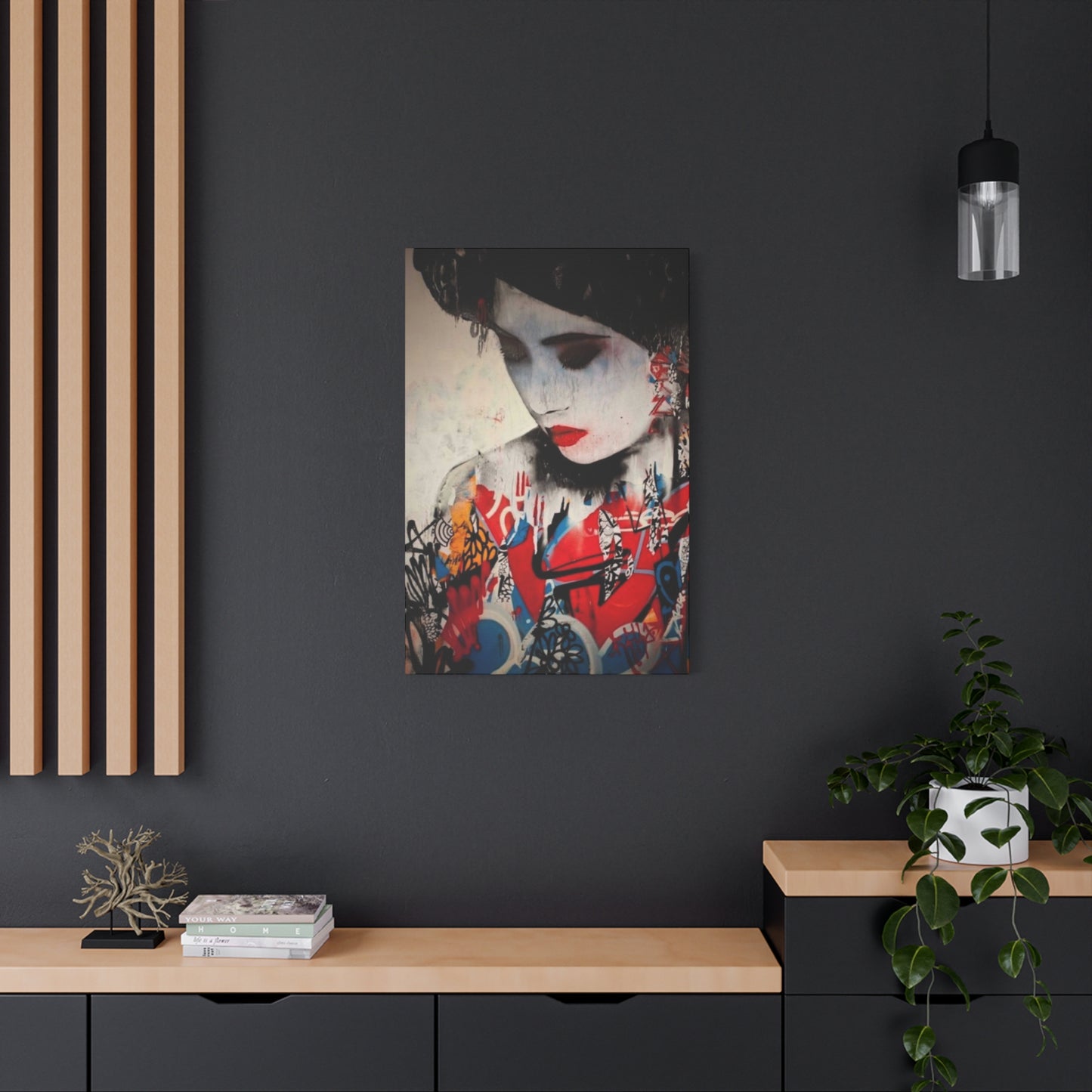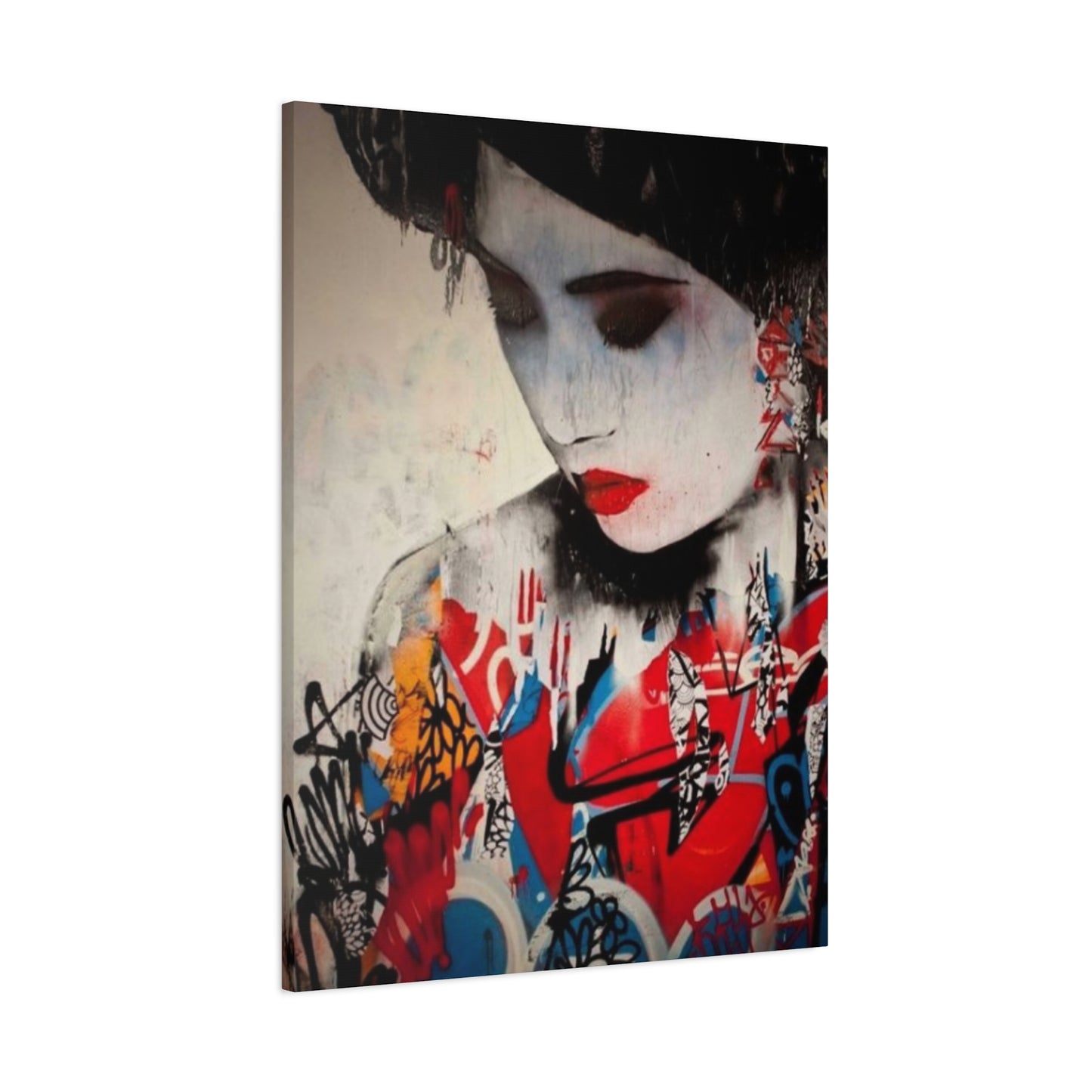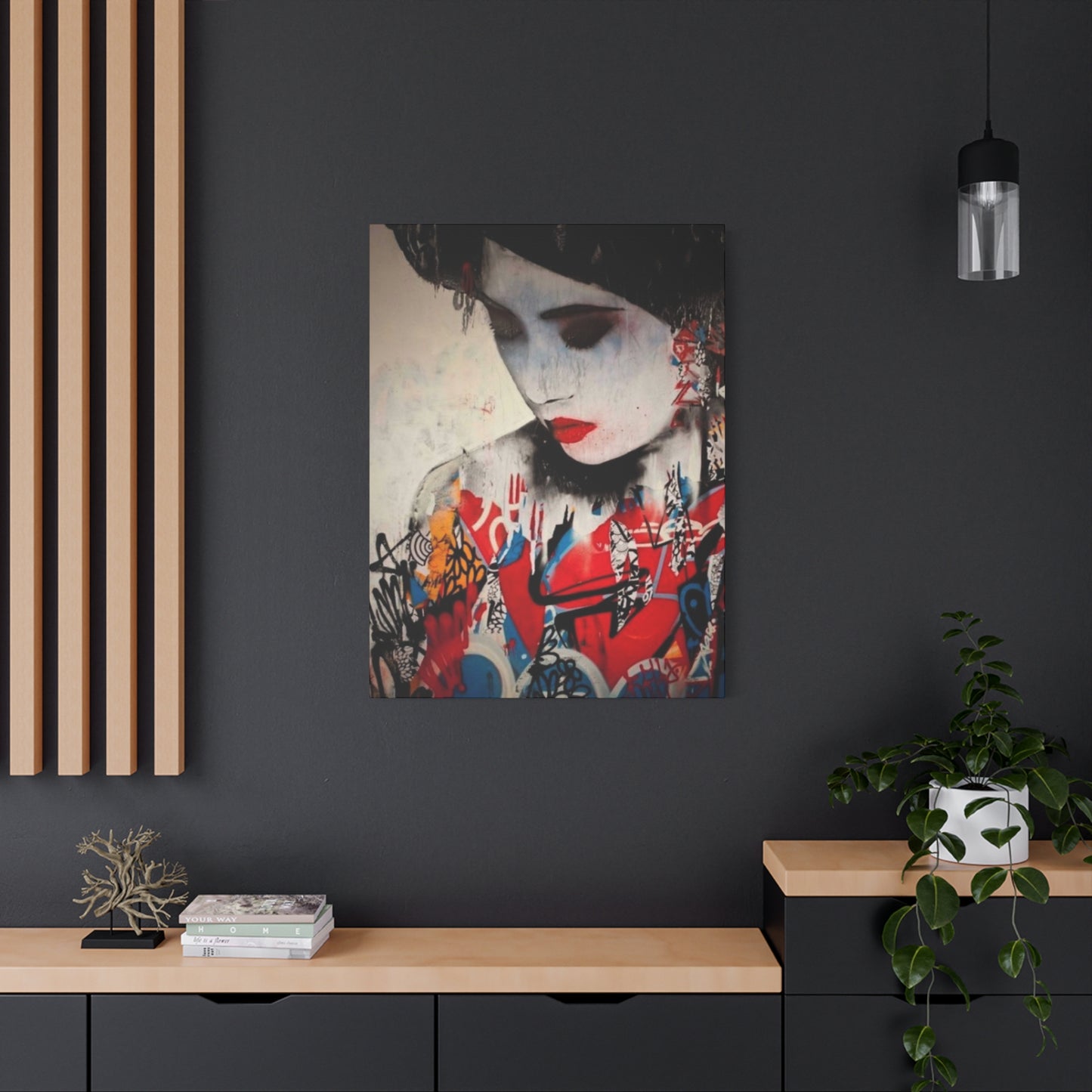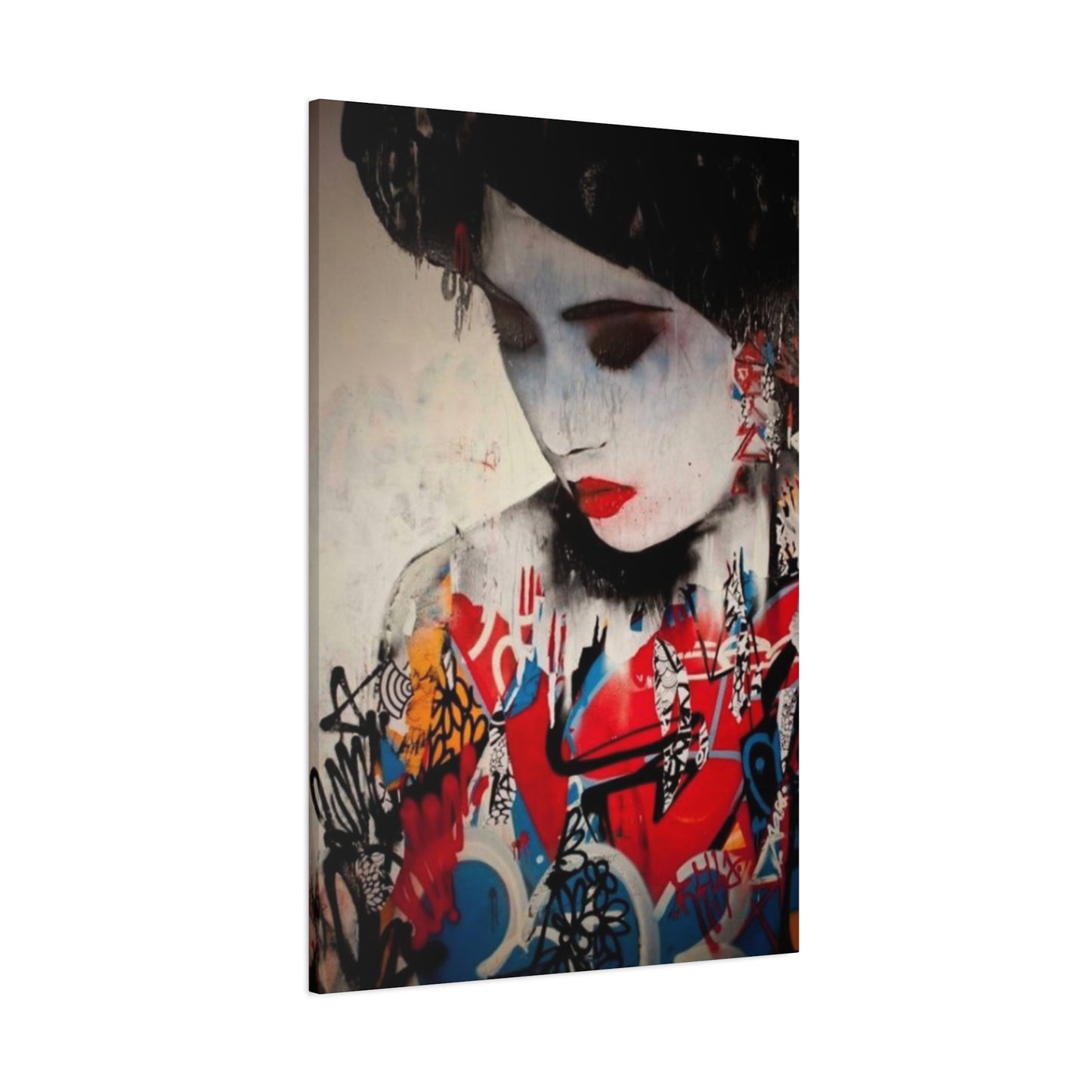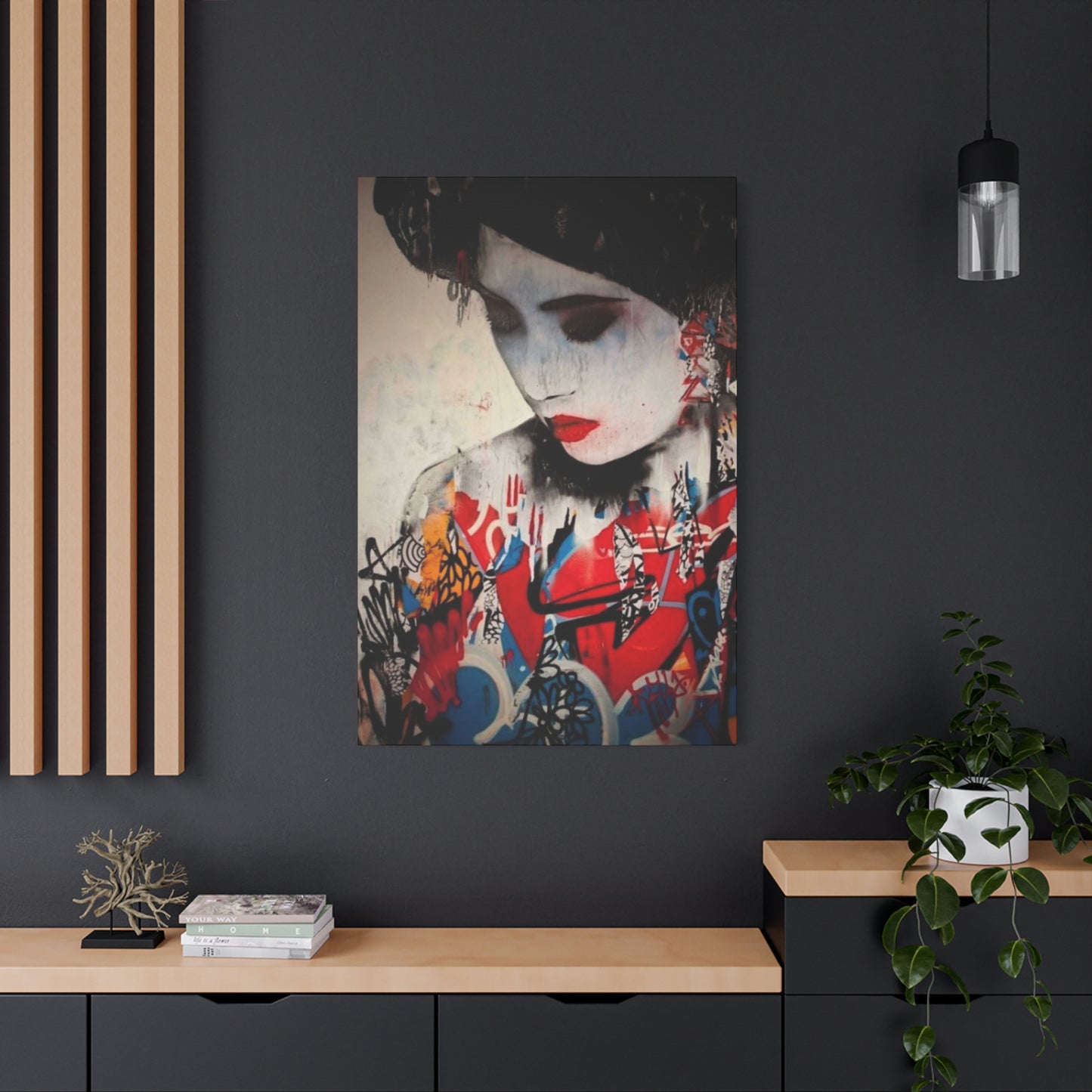Women Face Abstract Wall Art: Exploring Feminine Expression in Contemporary Design
The world of contemporary art has witnessed a remarkable transformation in how artists approach the human face, particularly the feminine visage. Abstract facial representations have emerged as a powerful medium that transcends traditional portraiture, offering viewers an opportunity to engage with art on multiple sensory and emotional levels. This artistic movement combines the recognizable elements of the human face with geometric shapes, bold color palettes, and unconventional compositions that challenge our perceptions of beauty and identity.
The fascination with abstract facial art stems from its ability to communicate complex emotions without relying on photorealistic detail. Artists working in this genre understand that the essence of human expression can be captured through simplified forms, strategic color placement, and the careful balance of positive and negative space. When viewers encounter an abstract face, they are invited to project their own experiences and interpretations onto the artwork, creating a deeply personal connection that differs from person to person.
In the context of feminine representation, abstract faces offer a refreshing departure from conventional beauty standards. Rather than depicting women according to rigid aesthetic ideals, these artistic interpretations celebrate the multifaceted nature of femininity itself. The abstraction allows for a more universal representation that can resonate with diverse audiences regardless of cultural background or personal experience. This inclusivity has contributed significantly to the growing popularity of abstract feminine art in both residential and commercial spaces.
The technical execution of abstract facial art requires a sophisticated understanding of proportion, color theory, and compositional balance. Artists must decide which features to emphasize, which to minimize, and how to create visual harmony within the piece. Some creators focus on the eyes as windows to the soul, rendering them as bold, commanding elements that anchor the entire composition. Others might emphasize the curve of a cheek or the line of a jaw, using these features as starting points for geometric exploration.
The emotional resonance of abstract faces lies in their ambiguity. Unlike traditional portraits that capture a specific moment or expression, abstract representations exist in a state of flux, allowing viewers to discover new interpretations with each viewing. This quality makes them particularly suitable for spaces where people spend significant time, as the artwork continues to reveal new dimensions and meanings over extended periods. The mystery embedded within these pieces ensures they never become visually stagnant or predictable.
Contemporary artists working with abstract feminine faces draw inspiration from various art historical movements, including Cubism, Surrealism, and Expressionism. The influence of Pablo Picasso's fragmented faces can be seen in many modern interpretations, though today's artists often infuse these classic techniques with contemporary sensibilities and cultural references. The result is a rich tapestry of artistic expression that honors the past while pushing boldly into the future.
Women Face Abstract Wall Art: A Blend of Mystery and Modernism
The intersection of mystery and modernism in women face abstract wall art creates a compelling visual language that speaks to contemporary sensibilities. This artistic approach combines the sleek, clean lines associated with modernist design with the enigmatic quality that comes from abstraction, resulting in pieces that are simultaneously sophisticated and intriguing. The blend of these elements produces artwork that functions as both a decorative element and a conversation starter.
Mystery in abstract feminine art manifests through various techniques and stylistic choices. Artists might obscure certain facial features while highlighting others, creating a sense of incompleteness that draws viewers in. The use of overlapping shapes and transparent layers adds depth and complexity, suggesting that there are hidden dimensions waiting to be discovered. Color choices also contribute to the mysterious quality, with unexpected combinations and gradients that defy conventional expectations.
Modernism brings structure and intentionality to the abstract feminine face. The movement's emphasis on form, function, and simplicity ensures that these artworks maintain visual clarity even as they explore abstract concepts. Clean lines, geometric shapes, and carefully considered negative space prevent the pieces from becoming chaotic or overwhelming. This disciplined approach allows the mystery to unfold gradually rather than assaulting the viewer with visual information all at once.
The fusion of mystery and modernism creates artwork that is particularly well-suited to contemporary living spaces. These pieces complement minimalist interiors without disappearing into the background, and they add depth to more eclectic environments without competing with other design elements. The sophisticated aesthetic appeals to collectors who appreciate both artistic innovation and timeless design principles.
Wall art featuring abstract feminine faces with this blend of qualities often becomes the focal point of a room. The pieces command attention without demanding it, drawing the eye through subtle visual cues and intriguing compositions. This quality makes them ideal for prominent placement in living rooms, dining areas, or professional spaces where they can be appreciated from multiple angles and distances.
The creation of these mysterious yet modern pieces requires artists to maintain a delicate balance. Too much abstraction can alienate viewers who seek some connection to recognizable forms, while too little can result in conventional portraiture that lacks the intrigue that makes abstract art so compelling. Successful artists navigate this tension skillfully, providing just enough visual information to ground the viewer while leaving ample room for imagination and interpretation.
Why Abstract Faces Represent the Future of Feminine Art
The evolution of feminine representation in art has reached a pivotal moment where abstract faces are emerging as the dominant form of contemporary expression. This shift reflects broader cultural changes in how society views femininity, identity, and the role of art in challenging established norms. Abstract facial representations offer a pathway forward that honors artistic tradition while embracing innovation and inclusivity.
Traditional portraiture of women has often been constrained by societal expectations and beauty standards that limit rather than expand understanding of feminine identity. Abstract approaches liberate both artists and viewers from these constraints, allowing for representations that celebrate diversity, complexity, and the multifaceted nature of women's experiences. This freedom makes abstract feminine faces particularly relevant to contemporary audiences who seek art that reflects their lived realities rather than idealized fantasies.
The future orientation of abstract feminine art is evident in its adaptability to emerging technologies and presentation formats. Digital artists can create abstract faces that incorporate animation, interactive elements, and augmented reality features, pushing the boundaries of what constitutes a portrait. These innovations ensure that abstract feminine art remains vital and relevant as artistic mediums continue to evolve in response to technological advancement.
Young collectors and art enthusiasts are particularly drawn to abstract representations of feminine faces because these pieces align with contemporary values around identity, representation, and authenticity. The rejection of rigid beauty standards in favor of artistic interpretation resonates with generations that have grown up questioning traditional narratives and seeking more inclusive forms of expression. This demographic shift suggests that demand for abstract feminine art will continue to grow in coming years.
The philosophical underpinnings of abstract feminine art also position it as a forward-looking movement. By refusing to define femininity according to a single set of characteristics or appearances, these artworks acknowledge the fluid, evolving nature of identity itself. This perspective aligns with contemporary discussions around gender, selfhood, and the ways in which individuals construct and perform their identities in various contexts.
Environmental and social consciousness also plays a role in the future-oriented nature of abstract feminine art. Many contemporary artists working in this space are committed to sustainable practices, ethical sourcing of materials, and using their platforms to address social issues. The abstract nature of their work allows them to embed political and social commentary within aesthetically pleasing compositions that can reach wide audiences.
The Emotional Appeal of Women Face Abstract Modernism Art
Emotional resonance forms the core of what makes women face abstract modernism art so compelling to viewers across diverse backgrounds and experiences. These artistic creations tap into universal human emotions while allowing for highly personalized interpretations, creating a unique viewing experience that can shift and evolve based on the observer's mood, perspective, and life circumstances.
The power of abstract feminine faces to evoke emotion stems from their ability to suggest rather than dictate feeling. Unlike photorealistic portraits that capture a specific expression frozen in time, abstract representations exist in a state of emotional ambiguity that invites viewers to project their own feelings onto the artwork. This interactive quality transforms the viewing experience from passive observation to active participation, deepening the emotional connection between person and art.
Color plays a crucial role in the emotional language of abstract feminine art. Warm tones like reds, oranges, and yellows can evoke feelings of passion, energy, and vitality, while cool blues and greens suggest tranquility, introspection, and calm. Artists working in this genre carefully consider color relationships and how different combinations interact to create emotional atmospheres. The strategic use of contrast, harmony, and saturation allows creators to fine-tune the emotional impact of their work.
The simplified forms characteristic of abstract modernism can paradoxically convey more emotional depth than detailed realistic renderings. By stripping away extraneous detail and focusing on essential elements, artists direct attention to the emotional core of their subject. A single curved line can suggest grace, vulnerability, or strength depending on its context and execution. This economy of means requires viewers to engage more actively with the work, filling in gaps and making connections that create personal meaning.
Texture and surface treatment also contribute significantly to the emotional appeal of abstract feminine art. Rough, impasto applications of paint can convey intensity and raw emotion, while smooth, blended surfaces suggest refinement and contemplation. The physical characteristics of the artwork engage viewers on a visceral level, creating responses that bypass intellectual analysis and connect directly with feeling.
The emotional appeal of these artworks makes them particularly valuable in spaces designed for relaxation, contemplation, or social gathering. A carefully selected piece can set the emotional tone for an entire room, influencing how occupants and visitors feel when they enter the space. This transformative quality explains why collectors often form deep attachments to particular pieces that seem to perfectly capture or complement their emotional landscape.
How Abstract Women Faces Evoke Strength and Grace
The depiction of feminine strength and grace through abstract representation offers artists a powerful toolkit for conveying these qualities in ways that transcend literal interpretation. Abstract approaches allow for the simultaneous expression of seemingly contradictory attributes, showing how strength and grace are not opposing forces but complementary aspects of a complex whole.
Strength in abstract feminine faces often manifests through bold compositional choices and confident mark-making. Artists might employ strong angular lines, assertive color choices, and commanding scale to convey power and determination. The face might be rendered with geometric precision that suggests structure and stability, or with gestural marks that communicate dynamic energy and force. These visual strategies create an impression of strength that viewers can feel viscerally, even without being able to articulate exactly how the effect is achieved.
Grace emerges through different means in abstract feminine art. Flowing curves, harmonious color relationships, and balanced compositions all contribute to a sense of elegance and refinement. The treatment of negative space becomes particularly important in conveying grace, as the areas surrounding the facial features can suggest movement, breath, and fluidity. Artists skilled in evoking grace understand that what they choose not to include is as important as what appears on the canvas.
The combination of strength and grace within a single composition requires sophisticated artistic decision-making. Too much emphasis on either quality can unbalance the piece, resulting in artwork that feels either heavy-handed or overly delicate. Successful artists navigate this challenge by finding visual metaphors that embody both qualities simultaneously. A line might be both strong and graceful, a color both powerful and refined.
Cultural references and symbolism often enrich the representation of strength and grace in abstract feminine art. Artists might draw on archetypal imagery associated with goddesses, warriors, dancers, or other figures that embody these qualities in various cultural traditions. The abstraction allows these references to remain suggestive rather than explicit, creating layers of meaning that reward close attention and repeated viewing.
The psychological impact of viewing abstract feminine faces that successfully combine strength and grace can be profound. For many viewers, particularly women, these artworks serve as visual affirmations of their own capacity to embody multiple qualities simultaneously. The art validates the complexity of feminine identity and challenges reductive stereotypes that pit strength against grace as if they were mutually exclusive.
The Allure of Abstract Faces in Modern Wall Art
The magnetic quality of abstract faces in modern wall art stems from their ability to transform spaces while maintaining an air of mystery and sophistication. These pieces occupy a unique position in the world of interior design, functioning as both statement pieces and subtle enhancements depending on how they are displayed and what surrounds them.
The allure begins with the immediate visual impact of an abstract face. Even from a distance, these compositions register as faces, triggering our innate human tendency to recognize and respond to facial forms. This biological imperative ensures that abstract facial art captures attention more effectively than purely geometric or landscape abstractions. The familiar form provides an entry point for engagement, while the abstract treatment maintains interest through novelty and ambiguity.
Scale plays a crucial role in the allure of abstract facial wall art. Large-scale pieces create dramatic focal points that can anchor an entire room's design scheme. The oversized presentation of an abstract face commands space in a way that demands engagement, drawing viewers into proximity where they can appreciate the subtleties of the artwork. Conversely, smaller pieces can create intimate moments of connection, rewarding close observation with details that might be missed in grander presentations.
The versatility of abstract facial art contributes significantly to its allure. These pieces can adapt to various interior design styles, from ultramodern minimalism to eclectic bohemian spaces. The abstract nature means they don't carry the specific associations that photorealistic portraits might bring, allowing them to complement rather than dictate the aesthetic direction of a room. This flexibility makes them valuable investments that can transition through multiple design iterations.
Lighting considerations dramatically affect how abstract facial art is perceived and experienced. Natural light throughout the day can reveal different aspects of the work as shadows shift and colors change in varying illumination. Artificial lighting can be strategically employed to emphasize particular features or create atmospheric effects that enhance the mood of the space. This responsiveness to lighting conditions means the artwork is never static but continues to offer new experiences.
The allure also stems from the intellectual engagement these pieces inspire. Viewers often find themselves returning to abstract facial art repeatedly, discovering new details or interpretations with each viewing. This quality prevents visual fatigue and ensures the artwork remains a source of interest and contemplation rather than fading into the background as familiar objects often do.
Exploring the Feminine Form in Women Face Abstract Art
The exploration of feminine form through abstract facial art represents a significant departure from historical approaches to depicting women in art. Rather than focusing exclusively on physical beauty or idealized proportions, contemporary artists use abstraction to investigate the deeper essence of feminine identity, experience, and expression.
Traditional art history is replete with images of women created primarily for the male gaze, emphasizing physical attributes according to prevailing beauty standards of their eras. Abstract approaches disrupt this pattern by refusing to treat the feminine face as an object to be admired purely for its physical qualities. Instead, these works invite consideration of femininity as a complex constellation of experiences, emotions, and identities that cannot be reduced to surface appearances.
The fragmentation common in abstract facial art serves a conceptual purpose beyond mere aesthetic innovation. By breaking the face into component parts and reassembling them in unexpected ways, artists comment on the fragmented nature of identity itself in contemporary society. Women navigate multiple roles, contexts, and expectations, and abstract art can visually represent this multiplicity in ways that realistic portraiture cannot.
Color choices in abstract feminine faces often carry symbolic weight related to cultural associations with femininity. However, progressive artists frequently subvert these expectations, using traditionally masculine colors in their depictions or avoiding gendered color associations altogether. This strategic use of color allows artists to question and challenge cultural assumptions about gender while creating visually striking compositions.
The treatment of facial features in abstract feminine art reveals what artists consider essential to feminine identity. Some focus intensely on eyes, suggesting that vision and perspective are central to feminine experience. Others emphasize lips, potentially commenting on voice, communication, or the silencing of women's speech. Still others deconstruct the face so thoroughly that no single feature dominates, proposing that feminine identity exists beyond any particular physical characteristic.
Texture and materiality in abstract feminine faces can reference traditional associations between women and certain crafts or materials. Artists might incorporate textiles, found objects, or unconventional media that evoke domestic spaces or traditional women's work. This integration of materials adds layers of meaning while also expanding the formal vocabulary available for exploring feminine themes.
Women Face Abstract Art: A Modern Twist on Portraiture
The transformation of traditional portraiture into abstract feminine facial art represents one of the most significant evolutions in contemporary artistic practice. This shift maintains the fundamental goal of portraiture, capturing something essential about the human subject, while radically reimagining the methods and approaches used to achieve this objective.
Historical portraiture served specific social and cultural functions, documenting appearances, conveying status, and preserving likenesses for posterity. Abstract approaches to feminine faces maintain some of these functions while introducing new possibilities. A contemporary abstract face can still serve as a form of documentation, but what it documents is psychological or emotional truth rather than physical appearance. The portrait becomes less about what someone looks like and more about what they represent or how they feel.
The freedom of abstraction allows artists to incorporate multiple perspectives, temporal dimensions, and emotional states within a single composition. Where traditional portraiture captured a moment frozen in time, abstract facial art can suggest movement, transformation, and the passage of time through dynamic compositions and overlapping forms. This temporal complexity makes the artwork more aligned with lived experience, which unfolds continuously rather than existing in discrete moments.
Technical approaches to creating abstract facial portraits vary widely among contemporary artists. Some begin with observational drawing or photography of actual subjects, then progressively abstract and distill the image to its essential elements. Others work entirely from imagination, constructing faces from geometric or organic forms without reference to specific individuals. Both approaches can yield powerful results, though they produce distinctly different types of artwork.
The relationship between artist and subject shifts significantly in abstract portraiture. Rather than attempting to please a patron by creating a flattering likeness, artists working abstractly have greater freedom to explore conceptual ideas and emotional truths. This shift has democratized portraiture in some ways, as abstract faces can represent archetypes or universal experiences rather than specific wealthy or powerful individuals.
Abstract feminine facial art also challenges viewers to develop new ways of looking and interpreting. The skills required to appreciate abstract portraiture differ from those needed for traditional work. Viewers must learn to read color, form, and composition as carriers of meaning rather than relying solely on representational accuracy. This educational dimension adds value to the artwork by encouraging visual literacy and deeper engagement with artistic expression.
Why Abstract Women Faces Are Perfect for Bold Interiors
The natural affinity between abstract feminine faces and bold interior design schemes stems from shared qualities of confidence, visual impact, and willingness to challenge conventions. These artworks thrive in environments that embrace strong aesthetic choices and aren't afraid to make decisive statements about style and taste.
Bold interiors typically feature strong color palettes, dramatic contrasts, and unexpected combinations of textures and materials. Abstract feminine faces complement these design strategies by matching their intensity while adding human warmth and emotional depth. Where bold interiors might risk feeling cold or austere, the presence of a feminine face, even in abstract form, introduces a humanizing element that makes spaces feel more inviting and livable.
The scale often employed in bold interior design finds a perfect partner in abstract facial art. Large-scale feminine faces can hold their own against other dramatic design elements like oversized furniture, statement lighting, or architectural features. The human face naturally commands attention and respect, so even when rendered abstractly and displayed large, these pieces feel appropriate rather than overwhelming.
Color relationships between abstract feminine art and bold interiors offer exciting opportunities for visual dialogue. An artwork might pick up and amplify colors present elsewhere in the space, creating harmonious connections that tie the design together. Alternatively, the art can introduce contrasting colors that create dynamic tension and visual interest. Both approaches can be successful when executed with consideration for overall compositional balance.
The confident aesthetic of abstract feminine faces aligns philosophically with the mindset required to create and maintain bold interiors. Both require a willingness to trust one's own taste and vision rather than defaulting to safe, conventional choices. This shared spirit of adventure creates a coherent overall impression that feels authentic and intentional rather than haphazard or trying too hard.
Abstract feminine art in bold interiors also benefits from the thoughtful use of negative space common in contemporary design. Clean backgrounds and uncluttered surfaces allow the artwork to breathe and be fully appreciated. The interaction between the bold artwork and equally bold surroundings creates a sophisticated visual ecosystem where each element enhances the others.
The Artistic Power of Women Faces in Abstract Modernism
The concentrated artistic power inherent in abstract modernist depictions of feminine faces derives from the convergence of formal innovation, conceptual depth, and emotional resonance. These works harness the expressive potential of the human face while employing the visual language of modernism to create art that is simultaneously intellectually engaging and emotionally moving.
Modernism's emphasis on reduction and essential forms finds ideal expression in abstract facial art. The human face already functions as a set of recognizable forms that can be simplified, rearranged, and reimagined without losing their fundamental identity as faces. Artists working in this tradition identify the minimum necessary elements required to suggest a face, then build compositions around these core components.
The power of these works often lies in what they omit rather than what they include. Negative space becomes an active compositional element, creating shapes and suggesting forms through absence. This approach requires viewers to complete the image mentally, engaging more actively with the artwork than they would with a fully rendered realistic portrait. The participatory nature of viewing abstract faces increases their psychological impact and memorability.
Abstraction allows artists to address complex themes related to feminine identity, representation, and experience without resorting to literal illustration. Metaphorical and symbolic elements can be woven throughout the composition, creating multiple layers of meaning that reveal themselves gradually. This depth ensures that abstract feminine faces reward sustained attention and repeated viewing.
The formal qualities of line, shape, color, and composition carry meaning independent of any representational content in abstract modernist work. A jagged line creates a different emotional effect than a smooth curve, regardless of what that line depicts. Artists skilled in abstract facial art leverage these formal properties to reinforce and amplify the conceptual content of their work, creating unified pieces where form and content are inseparable.
The historical weight of both portraiture and modernism adds significance to contemporary work that combines these traditions. Artists engaging with abstract feminine faces participate in conversations that extend back through decades of artistic innovation and experimentation. This historical consciousness enriches the work, even for viewers who may not be consciously aware of these connections.
How Abstract Women Faces Speak to the Soul
The profound connection many viewers feel with abstract feminine facial art suggests these works access something deeper than aesthetic appreciation alone. The spiritual and emotional dimensions of these pieces allow them to communicate in ways that bypass rational analysis and speak directly to fundamental aspects of human consciousness and feeling.
The human face holds unique significance in our psychological and social development. From infancy, we are programmed to recognize and respond to faces, seeking them out for information about safety, emotion, and connection. Abstract facial art taps into these deep-rooted responses while introducing ambiguity that prevents the automatic categorizations we typically make when viewing faces. This combination of familiarity and uncertainty creates a state of heightened attention and openness.
Many abstract feminine faces possess a meditative quality that invites contemplation and introspection. The simplified forms and carefully balanced compositions create visual environments that are restful rather than agitating, allowing viewers to settle into a receptive state of mind. In this state, the artwork can trigger associations, memories, and emotions that arise from the viewer's own depths rather than being imposed by the artist.
The archetypal qualities often present in abstract feminine faces contribute to their soul-speaking power. These pieces may evoke universal feminine principles or energies that exist across cultures and throughout human history. The abstraction allows these archetypal elements to emerge without being tied to specific cultural contexts or religious traditions, making them accessible to viewers from diverse backgrounds.
Color operates at a primal level in abstract feminine art, affecting mood and emotion through mechanisms that precede conscious thought. The wavelengths of light reflected by different colors interact with our visual system and brain chemistry in ways that can induce calm, excitement, introspection, or joy. Artists attuned to these effects can craft emotional journeys through careful color orchestration.
The mystery inherent in abstract feminine faces leaves space for the divine or transcendent to enter the viewing experience. Unlike literal representations that define and limit what is depicted, abstract art maintains openness to multiple interpretations and meanings. This openness can create a threshold space where viewers encounter something beyond the everyday, something that connects to larger questions of meaning, beauty, and existence.
Women Face Abstract Art: Mysterious and Timeless
The dual qualities of mystery and timelessness combine in abstract feminine facial art to create works that resist easy categorization or dating. These pieces exist outside of specific temporal or cultural moments, speaking to enduring aspects of human experience while maintaining an air of enigma that prevents complete interpretation.
Mystery in abstract feminine art emerges through various artistic strategies. Partial obscuration of features creates intrigue by suggesting there is more to be seen than what is immediately visible. Ambiguous expressions that could signify multiple emotions simultaneously prevent viewers from settling on a single reading of the work. Unconventional color choices and unexpected compositional decisions disrupt familiar patterns, forcing viewers to look more carefully and think more deeply.
Timelessness results from the abstraction itself, which removes specific details that might date the work to a particular era. Without identifiable hairstyles, clothing, or accessories, abstract feminine faces transcend their moment of creation. The focus on fundamental forms and universal human qualities ensures relevance across changing fashions and cultural shifts.
The combination of mystery and timelessness creates artwork that maintains its power and relevance over extended periods. While trends in art and design come and go, truly successful abstract feminine faces continue to engage new generations of viewers. Each era brings its own interpretations and finds its own meanings in these enduring works.
Artists creating mysterious and timeless abstract feminine faces often draw on multiple cultural and historical references simultaneously. This layering of influences prevents the work from being locked into a single tradition or perspective. The synthesis of diverse sources creates something new that belongs to no single time or place while potentially resonating with all.
The philosophical implications of mysterious and timeless feminine faces touch on fundamental questions about identity, representation, and the nature of art itself. These works suggest that some aspects of human experience exist beyond language and rational comprehension, accessible only through intuition and feeling. This mystical dimension elevates abstract feminine art beyond mere decoration into the realm of the profound.
Why Abstract Women Faces Are Trending in Interior Design
The current prominence of abstract feminine faces in interior design reflects broader cultural and aesthetic shifts that favor personalization, emotional authenticity, and artistic sophistication in residential and commercial spaces. This trend shows no signs of abating, as the qualities that make these pieces appealing align with enduring human needs and contemporary values.
Social media has played a significant role in popularizing abstract feminine facial art. Platforms centered on visual content allow designers and homeowners to share striking images of spaces featuring these pieces, inspiring others to incorporate similar elements into their own environments. The photogenic quality of abstract faces makes them ideal for social sharing, creating a feedback loop that continues to drive interest and demand.
The personalization trend in interior design finds perfect expression in abstract feminine faces. Unlike mass-produced decorative items, these artworks feel unique and meaningful, imbuing spaces with character and individuality. Even when pieces are reproduced, the abstract nature means each viewer brings their own interpretation, making the experience of the artwork feel personal and distinctive.
The wellness movement's emphasis on creating nurturing, emotionally supportive environments has increased appreciation for art that speaks to feelings and interior states. Abstract feminine faces can set emotional tones for spaces, providing visual anchors for contemplation, inspiration, or calm. This functional aspect enhances their value beyond pure aesthetics.
Color trends in interior design often align well with the palettes commonly employed in abstract feminine art. Current preferences for both muted, sophisticated neutrals and bold, saturated hues can be found in various examples of this art form. This versatility means abstract faces can work within diverse color schemes, making them adaptable to changing design preferences.
The investment value of original abstract feminine art has also contributed to its popularity in interior design. As awareness grows about the collectibility and potential appreciation of contemporary art, homeowners and designers increasingly view quality pieces as investments rather than mere decorations. This shift in perspective encourages the selection of meaningful, well-executed works that will endure both aesthetically and financially.
The Symbolism Behind Women Face Abstract Wall Art
The rich symbolic content embedded within abstract feminine facial art adds layers of meaning that transform these pieces from simple decorations into complex cultural statements. Understanding the symbolic dimensions enhances appreciation and reveals the sophisticated thinking behind successful works in this genre.
Facial features themselves carry symbolic weight that artists can leverage or subvert. Eyes traditionally represent vision, knowledge, and consciousness, so their treatment in abstract feminine art often comments on women's ways of seeing and being seen. Oversized eyes might suggest heightened awareness or surveillance, while obscured eyes could reference invisibility or the denial of perspective.
Geometric shapes incorporated into abstract feminine faces bring their own symbolic associations. Circles suggest wholeness, cycles, and completion, connecting to feminine associations with nature and recurring patterns. Triangles can represent balance, the trinity of maiden-mother-crone, or the integration of multiple aspects of self. Squares and rectangles introduce structure and stability, potentially commenting on the frameworks within which feminine identity is constructed.
Color symbolism in abstract feminine art draws on both universal associations and culturally specific meanings. Red might reference passion, vitality, or anger, while also connecting to blood, life force, and physical embodiment. Blue can suggest calm, sadness, or spiritual transcendence. Artists use these color meanings intentionally to support their conceptual goals, though the abstract format allows for ambiguity and multiple simultaneous interpretations.
The fragmentation or integration of the face itself functions symbolically in many abstract works. A unified, cohesive face might represent self-integration and wholeness, while fragmented faces could comment on identity fracture, the multiplicity of roles women navigate, or the violence of objectification that breaks women into component parts.
Cultural and mythological references enrich the symbolic vocabulary of abstract feminine art. Artists might evoke goddess figures, archetypal mothers, wise women, or other powerful feminine symbols from various traditions. The abstraction allows these references to remain suggestive rather than literal, creating connections without appropriating specific cultural imagery.
Bold and Beautiful: Women Faces in Abstract Modernism
The celebration of boldness and beauty in abstract modernist depictions of feminine faces challenges traditional notions of feminine art as delicate or decorative. These powerful works assert that feminine beauty can be strong, commanding, and uncompromising while remaining deeply engaging and aesthetically sophisticated.
Boldness in abstract feminine art manifests through confident mark-making, strong compositional choices, and unapologetic use of color and form. Artists working in this mode reject timidity and half-measures, committing fully to their artistic visions. This confidence communicates itself to viewers, who respond to the assurance and intentionality evident in the work.
The redefinition of beauty in abstract feminine faces expands beyond conventional prettiness to encompass strength, complexity, and emotional authenticity. Beauty in this context might involve jarring color combinations that challenge the eye, asymmetrical compositions that create productive tension, or raw, unfinished surfaces that emphasize process and materiality. This expansive understanding of beauty aligns with contemporary movements toward body positivity and inclusive representation.
The combination of boldness and beauty creates artwork that commands attention while rewarding sustained engagement. Initial impact draws viewers in, while deeper exploration reveals subtleties and nuances that sustain interest. This balance between immediate accessibility and lasting depth characterizes the most successful abstract feminine faces.
Technical mastery underpins the bold beauty of abstract modernist feminine art. While the finished pieces may appear spontaneous or intuitive, they typically result from sophisticated artistic decision-making and refined craft. The ability to make bold choices effectively requires deep understanding of formal elements and how they interact to create meaning and emotion.
The cultural significance of bold, beautiful abstract feminine faces extends beyond individual artworks to influence broader conversations about femininity, power, and representation. These pieces model a vision of femininity that refuses to be confined by limiting stereotypes or expectations, offering alternative narratives that expand possibilities for how feminine identity can be conceived and expressed.
Adding a Touch of Feminine Energy with Abstract Face Art
The concept of feminine energy in abstract facial art relates to qualities traditionally associated with femininity, including nurturing, intuition, receptivity, and emotional intelligence. Incorporating artwork that embodies these qualities can significantly affect the atmosphere and emotional character of a space.
Feminine energy in art is not necessarily about depicting women literally but about capturing qualities and essences that read as feminine. Flowing curves, organic forms, soft color transitions, and balanced compositions all contribute to a sense of feminine energy. Abstract faces that incorporate these elements bring a softening influence to spaces that might otherwise feel harsh or sterile.
The placement of abstract feminine faces in environments dominated by masculine energy or neutral aesthetics can create productive balance. The introduction of curves and organic forms provides visual relief from angular architecture or furnishings. The emotional warmth emanating from facial art, even when abstract, counters the potential coldness of minimalist or industrial design schemes.
Color plays a crucial role in establishing feminine energy through abstract art. While any color can be used in feminine contexts, certain palettes particularly evoke this quality. Soft pastels, warm earth tones, and harmonious combinations of analogous colors all contribute to a feminine atmosphere. However, contemporary interpretations also embrace bold, saturated colors as expressions of powerful feminine energy.
The emotional accessibility of abstract feminine faces makes them effective vehicles for introducing feminine energy into spaces. Even without explicit narrative content, these pieces communicate feeling and invite emotional response. This quality can make spaces feel more welcoming and human-centered, important considerations in both residential and commercial environments.
Understanding cultural variations in how feminine energy is conceived and expressed ensures respectful and effective use of abstract feminine art. Different cultures associate different qualities and visual elements with femininity, and artists working globally may draw on diverse traditions. This cultural awareness enriches the field while requiring thoughtfulness in interpretation and application.
How Women Face Abstract Modernism Transforms Minimalist Spaces
The strategic incorporation of abstract feminine facial art into minimalist spaces creates dynamic relationships between reduction and expression, absence and presence. This pairing demonstrates that minimalism need not be cold or impersonal but can instead provide the ideal stage for powerful artistic statements.
Minimalist design philosophy emphasizes simplicity, clean lines, and the elimination of unnecessary elements. Within this context, each included element carries heightened significance. An abstract feminine face in a minimalist space becomes a focal point that anchors the entire environment, providing visual interest and emotional warmth without compromising the overall aesthetic of simplicity.
The color palette in minimalist spaces typically remains restrained, often featuring whites, grays, and natural wood tones. Abstract feminine art can work within this limited palette, providing visual interest through form and composition rather than color variety. Alternatively, a single piece featuring bolder colors can serve as a calculated accent that enlivens the space while maintaining overall restraint.
Scale becomes particularly important when placing abstract feminine art in minimalist environments. Large-scale pieces can make bold statements that are fully supported by the uncluttered surroundings. The clean backgrounds typical of minimalist spaces allow the artwork to be seen clearly without competing with other visual elements, maximizing its impact and presence.
The conceptual alignment between abstraction and minimalism strengthens their combination. Both movements involve reduction, focusing on essential elements while eliminating the superfluous. Abstract feminine faces that embrace this reductive approach feel philosophically consistent with their minimalist contexts, creating coherent visual statements.
Lighting in minimalist spaces can be orchestrated to enhance abstract feminine art. The typically abundant natural light in minimalist interiors allows the artwork to be seen clearly throughout the day, while strategic artificial lighting can create dramatic effects in evening hours. The interplay between light, shadow, and form becomes particularly evident in simplified environments.
Final Thoughts:
In conclusion, Women Face Abstract Wall Art offers a compelling and powerful exploration of feminine expression through the lens of contemporary design. By blending abstraction with the imagery of the female face, these works transcend traditional depictions of womanhood and open new avenues for understanding femininity. Through bold shapes, unexpected color palettes, and fragmented forms, this style of art challenges the viewer to reconsider how we perceive women, their identities, and their emotional landscapes.
One of the most captivating aspects of women face abstract art is its ability to capture the essence of femininity without relying on realistic portrayals. The abstraction of the female face allows artists to move beyond conventional standards of beauty and gender representation, offering a more dynamic and fluid interpretation of women. This freedom enables artists to express the complexity, strength, and nuance of the female experience, rather than reducing it to a single, often idealized image. In this way, abstract women face art becomes an empowering tool that elevates the subject of femininity to a broader, more inclusive narrative.
The abstraction of the female face allows for a more symbolic and emotional engagement with the subject. Instead of being focused on specific facial features or physical likeness, the form becomes an expression of inner experience and identity. The use of lines, shapes, and colors can evoke emotions ranging from serenity to power, joy to sorrow, or vulnerability to strength. Each piece becomes a reflection of the multi-faceted nature of women’s lives, capturing the complexities of thought, emotion, and spirit. For example, an exaggerated curve may represent a sense of fluidity or grace, while sharp angles may evoke the sharpness of intellect or determination. This abstraction gives viewers the opportunity to find their own interpretations and connections, making each piece deeply personal and unique.
Color plays a vital role in conveying emotion in women face abstract art. While traditional portraits might use natural skin tones and realistic shading to create a lifelike representation, abstract works often employ bold, non-representational colors to express psychological states or emotional undercurrents. The use of warm reds, fiery oranges, or deep blues can convey passion, strength, or tranquility, while softer pastels or earth tones might evoke feelings of gentleness, wisdom, or contemplation. These color choices, coupled with the abstraction of form, allow artists to move beyond the limitations of realism, providing a more layered, complex portrayal of women’s emotions and inner lives.
The fragmented or disjointed nature of many women face abstract pieces further enhances this idea of complexity. The deconstruction of the face into shapes, lines, and geometric forms reflects the idea that identity is not singular or fixed. Women are multi-dimensional beings, and their experiences are often fragmented, shaped by social, cultural, and personal factors. By breaking down the face into pieces, artists highlight the disjointed nature of these experiences, allowing the viewer to see the female form not as a single, unified image, but as a series of evolving parts—each with its own unique story to tell. The abstraction becomes an invitation to explore the multiple layers of a woman’s identity and experience, whether that involves gender, race, culture, or emotion.
Women face abstract art also plays a significant role in challenging traditional norms and expectations surrounding femininity in art. Historically, the representation of women in art has often been idealized or sexualized, with few depictions that truly reflect the diversity and complexity of women’s lives. Abstract art, with its emphasis on non-traditional forms and creative freedom, offers a space where women can be represented in all their variety. These artworks do not adhere to the conventional standards of beauty or the constraints of realism; instead, they create space for women to be viewed through a lens that is uniquely their own. This shift in perspective allows for a more authentic exploration of what it means to be a woman, moving away from stereotypes and celebrating individuality, strength, and depth.
Furthermore, women face abstract art connects to broader contemporary design trends, where abstraction and minimalism have gained prominence as a means of expressing complex ideas. These works blend seamlessly into modern and eclectic spaces, adding depth and meaning to home decor. Whether placed in a minimalist living room, a vibrant studio, or a calm, neutral bedroom, abstract representations of the female face become a dynamic addition to any space, infusing it with both beauty and contemplation. The ability to engage with such art in a personal way—interpreting the colors, forms, and shapes as reflections of one’s own experiences or emotional state—makes women face abstract art an ideal choice for anyone seeking to cultivate an environment of introspection, empowerment, and individuality.

















